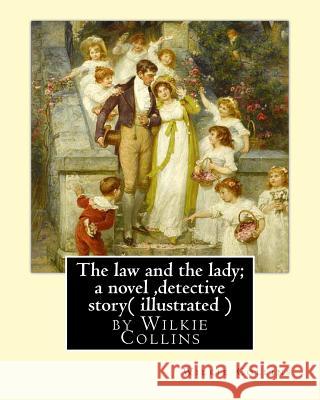The law and the lady; a novel, By Wilkie Collins, ( illustrated ) detective story » książka
The law and the lady; a novel, By Wilkie Collins, ( illustrated ) detective story
ISBN-13: 9781535072359 / Angielski / Miękka / 2016 / 224 str.
The Law and the Lady is a detective story, published in 1875 by Wilkie Collins. It is not quite as sensational in style as The Moonstone and The Woman in White.Valeria Brinton marries Eustace Woodville despite objections from Woodville's family leading to disquiet for Valeria's own family and friends. Just a few days after the wedding, various incidents lead Valeria to suspect her husband is hiding a dark secret in his past and she discovers that he has been using a false name. He refuses to discuss it leading them to curtail their honeymoon and return to London where Valeria learns that he was on trial for his first wife's murder by arsenic. He was tried in a Scottish court and the verdict was 'not proven' rather than 'not guilty' implying his guilt but without enough proof for a jury to convict him. Valeria sets out to save their happiness by proving her husband innocent of the crime. In her quest, she comes across the disabled character Miserrimus Dexter, a fascinating but mentally unstable genius, and his devoted female cousin, Ariel. Dexter will prove crucial to uncovering the disturbing truth behind the mysterious death.General Wilkie Collins' earliest career attempt - to read for the bar - informed much of his later work, and he was particularly interested in the marriage, divorce and property laws of England and of Scotland - mysteries and miseries surrounding these laws serve as plot-points in many of his novels, such as the notorious trial of Madeleine Smith, who was accused of poisoning her paramour with arsenic (the verdict was "Not Proven"). In the novel, Collins attacks the Scottish courts for allowing these verdicts, by showing how the defendant's reputation is tarnished even though they were not found legally guilty.Though Collins is sometimes credited with inventing the detective story, others give that honor to Edgar Allan Poe, whose Murders in the Rue Morgue (1841) was 27 years earlier than Collins' The Moonstone. However, Collins almost certainly began the tradition of female sleuths continued by Agatha Christie with Miss Marple and, in more modern times, V. I. Warshawski, Sara Paretsky's private detective. William Wilkie Collins (8 January 1824 - 23 September 1889) was an English novelist, playwright, and short story writer. His best-known works are The Woman in White (1859), No Name (1862), Armadale (1866), and The Moonstone (1868). The last is considered the first modern English detective novel. Born into the family of painter William Collins in London, he lived with his family in Italy and France as a child and learned French and Italian. He worked as a clerk for a tea merchant. After his first novel, Antonina, was published in 1850, he met Charles Dickens, who became a close friend, mentor and collaborator. Some of Collins's works were first published in Dickens' journals All the Year Round and Household Words and the two collaborated on drama and fiction. Collins published his best known works in the 1860s, achieved financial stability and an international reputation. During that time he began suffering from gout. After taking opium for the pain, he developed an addiction. During the 1870s and 1880s the quality of his writing declined along with his health. Collins was critical of the institution of marriage and never married; he split his time between Caroline Graves, except for a two-year separation, and his common-law wife Martha Rudd, with whom he had three children.
Zawartość książki może nie spełniać oczekiwań – reklamacje nie obejmują treści, która mogła nie być redakcyjnie ani merytorycznie opracowana.











